All right, well, that was a week, wasn’t it? As I expect (hope?) most of you already know, this past Thursday at SXSW in Austin, Texas we held a panel to announce the first little bit of our X-MEN roll-out plan. For those who may have missed it, the trailer that we debuted can be seen in all its glory here. And the reaction was everything that you might expect, with X-MEN trending nationally at #1 for the rest of the day and beyond. Response of course covers the gamut, and depending on who you speak to and where you happen to be on the internet, I’m either a genius or the devil, often for the exact same things. Which was all very much to be expected, of course. We didn’t really give out that much hard information about the books, partly because we still need to safeguard the secrets of the final couple of months of the current era and also because we’ve still got a ways to go until these comics are out there in the world where they can be read and evaluated on their own merits. But in all honesty, I was happy with the response and happy that so many people expressed an openness to what we might be doing, even if they were trepidatious about one element or another. (A lot of people seemed really concerned that Cyclops looked too young, a complaint that I don’t think we’ve often seen about a character. But don’t worry, he’s not from the past or anything, he’s regular old present day Cyclops. Living on a tropical island has wonderful rejuvenating properties.)
More importantly from my point of view was getting to spend a bit of time talking casually with a chunk of the new X-Men creative teams, including Jed MacKay, Gail Simone and David Marquez. Working from afar can sometimes feel a little bit distancing beyond geographically, and so it was good to connect with people directly. This was the first time that collaborators David and Gail met in person, for instance, and that can only help their collaboration to get stronger.
(That’s actually X-MEN artist Ryan Stegman that we’ve all been chowing down on. He lost the straw-draw for it. R.I.P.)
So anyway, things will get a little bit easier from here on in as far as what and how much I can talk about. And it’s a bit of a relief to have some of this material, even the tiniest bit of it, out in the world where people can hate on it for what it is rather than what they’re afraid it will be. As I’ve said before, we’re definitely not going to be able to make every person happy in all ways, but we’re going to put forward our strongest efforts to craft a line of excellent comics that people are going to want to read. So stick around if that interests you and see how we make out, eh?
But enough about me. How has your week been?
Ray Cornwall
That Wolverine/Havok series was AMAZING. I get that it probably looks a little dated, because lettering on that painted art probably looks a little odd. But I remember seeing that book everywhere when it came out, and it had a wide audience. I'm curious- were you at Marvel when that book came out? Do you remember if it was considered a success?
HAVOK & WOLVERINE: MELTDOWN came out around 1988 as I recall, Ray, which was before my arrival. But I do recall it being one of the books I brought into my college illustration class to help change the mind of my instructor Jerry Pinkney, a very fine artist in his own right, about the value of comic book storytelling and art. The explosion of high-quality painted comics during that period was a bit of a revelation to him. As for the book’s overall reception, my memory is that it did well and was well-regarded internally, at least by the time I had started as an intern.
Artu
I discovered you while i was reading the awesome Jed Mackey's Moon Knight, and i just started to read your newsletter, can you say something that are you working nowadays? I know The Vengeance of the Moon Knight and Avengers Twilight. Moreover, changing the subject, the limited series is always announced as limited series? I mean, we got very surprised to see that Hickman's GODS is ending.
Welcome, Artu! Every single installment I do the PIMP MY WEDNESDAY section that details precisely what releases my office has coming out in any given week, so looking back over past installments should give you all of the insight you need there. As for G.O.D.S., we set out initially to do eight issues with the possibility of continuing onward thereafter, or for coming back again later with an additional follow-up. But there are other things that Jonathan wants to do and that we want him to do (including the wildly successful new Ultimate line) so for the time being, #8 is where we’ll wrap up for now. That’s a bit of a different situation than having a legitimate limited series from the jump, like, say, our currently-running NIGHT THRASHER series, which is four issues in length.
Kieron Gillen
Picking up on Callie's questions... unless I'm missing something, Gaiman wasn't an established Author when he broke into comics. He was an established journalist - as far as I know, he'd done that Duran Duran book, but no other book length thing before he got into comics, and certainly not fiction. I would advice Callie to go and specifically read a few writer's backgrounds and see their journey into comics (Gaiman's is even on his wikipedia page). It's a question which turns up in interviews a lot, so a little google will reveal all the details they require.
It’s always a pleasure to hear from the thoughtful and erudite Kieron Gillen, whose own Newsletter can be subscribed to here, and whose upcoming series THE POWER FANTASY looks really interesting.
Zack J
Quick question about something I just don't understand. How the intersection of storytelling and tech coming together in some exciting new ways with the partnership between Veve and Marvel? How does that impact the approach to storytelling you and your writers undergo?
Um…I don’t know, Zach? Ultimately, as with similar digital reading platforms Marvel releases have been on in the past, the translation from tangible media to a guided view is accomplished after the fact rather than being something that is sharply considered beforehand. In other words, the storytelling leads, and the technological application follows.
Steve Stoltey
This may seem a bit out of left field, but I am in the midst of a read/re-read of the entirety of Avengers, FF, Spidey, Thor, Cap and sometimes Iron Man. I just finished Civil War and I am wondering about the mood around the office. I was reading at the time, but even re-reading it there is a sense of excitement surrounding all the possibilities for new and different stories coming out of this particular event. What is your recollection of that time in the general sense of the possibilities and attitudes toward the possibilities around the company?
Well, Steve, one of the things you’ve got to understand about us at Marvel is that while we occasionally make some passing attempt at humility when out in the public eye, we really are the biggest fans of our own crap that there are. And so, sure, people were feeling pretty good at around the time CIVIL WAR was coming out—but that had as much to do with the zeal with which it was snatched up by the audience as much as anything less substantive. And there have certainly been projects over the years that folks among our team have thought were going to be monstrous successes but which didn’t connect with the audience for one reason or another. But CIVIL WAR just clicked right from the start. Always nice to be able to ride that wave.
Mark Mosedale
Your newsletter has become such a Sunday fixture for me that when I didn’t read it last night I dreamt a(n obviously wrong) Black Panther anecdote instead. My subconscious captured your writing style quite well!
I was wondering: are there common mistakes that new-to-Marvel writers make? And, if so, have those mistakes changed over the course of your time at Marvel? Three and a half decades is a fair chunk of time in comics years, and I’m wondering whether the change in style and content has brought with it a change in writers’ mistakes.
I need to turn your dreams into my A.I., Mark. It’d make pounding my way through one of these a whole lot easier. In terms of incoming writers making common mistakes, there are a few of them, depending on what prior experience in other forms of writing the person may have in their background. A big one is asking for multiple actions in a single panel. Given that comics are a static medium, any given character can do one thing and one thing only within a particular frame. But coming from film or television or theater or whatever where you have motion, that can be a tricky thing to internalize.
Axel Alonso once listed three examples of such panels that he swore came from actual scripts that had been submitted to him, and I cribbed them down and have made them a part of my yearly Philosophy of Marvel talk ever since. They are:
#1) Spider-Man leaps to punch Green Goblin, who falls back, throwing a Pumpkin bomb that sends Spidey flying into a brick wall.
#2) Wolverine pauses for a moment then turns to admonish Cyclops.
#3) Long shot of the desert. Far in the distance, the Hulk arches an eyebrow and looks to the sky.
None of the above is drawable as written.
Jeff Ryan
Comic fans have heard legends of Stan and Jack cranking out Avengers #1 over a five-day weekend, old pros drawing eight pages a day, Kirby doing a book a week. What’s one of the great speed-drawing performances you’ve been firsthand witness to?
Let me correct one thing first, Jeff: while AVENGERS #1 was produced very quickly, it wasn’t done in five days, it took longer than that. But still a very compressed timeline for a full issue of a book. For me, I believe the fastest I ever got a story done was the DARK AGES preview that ran in the FREE COMIC BOOK DAY book a couple years back. As I remember things, there was another preview story that was meant to go in that slot but which fell out—the project was moved back or the team couldn’t get it done. I forget the circumstances. But I’d been trying to get DARK AGES off the ground for a while, and so I volunteered to get a preview story done in time for the book. From that moment until when the issue went to print was only two weeks. Granted, the story was only 10 pages long, but Tom Taylor needed to write it and Iban Coello needed to draw it and it needed to be lettered and colored and proofread and everything. And the project logo needed to be designed, etc. Especially considering the rush, I thought it turned out really well, and it definitely got people excited for the project’s eventual release some time later on.
Ben Morse
in commemoration of your move from A to X, was there ever an X-Men character you or a writer felt could have made a good Avenger but couldn’t negotiate the particulars on?
Not that I can think of, Ben. There were some similar things, though. When we worked on AVENGERS: X-SANCTION, Jeph Loeb and I had left Cable with his techno-organic virus neutralized so that he thereafter possessed the full range of his telepathic and telekinetic abilities. We were expecting that plot thread to be followed up on thereafter—we had been toying with the notion of making Cable the head of S.H.I.E.L.D. after AVX. But the X-Group of that period had other ideas. Outside of that, we’d sometimes want to use the X-characters who had been a part of the Avengers in the past, particularly Beast, but the X-Office inevitably had Hank well enmeshed in their storylines and so we could never get him for more than a guest spot.
Manqueman
Just started reading Avengers: Twilight and saw the special thanks to Alonso. Is that because the project is that old or something else? And in Gabriel’s case isn’t he still at Marvel? So how did he earn his thanks?
We don’t just give a special thanks because somebody is no longer with the company, Manque. In the case of AVENGERS TWILIGHT, as I’ve related before, that project took a very long time to come to fruition. But it started with a conversation between Axel, David and myself back when DARK KNIGHT III: THE MASTER RACE was coming out from DC. We were talking about why it was that Marvel didn’t have a future storyline along those DARK KNIGHT lines, and I went away overnight and came back the next day with the bare bones of the plot for AVENGERS TWILIGHT. But Axel and David both commented on it, making suggestions and giving ideas and input that went into the final product. Now, the story that Chip and Daniel are delivering isn’t exactly what we had laid out all those years before, but it is an outgrowth of that development process. And so, since the two of them contributed materially to what became the final book, I felt it only right to accord them a special thanks credit now that the series is seeing the light of day.
Nick Mercurio
Is there an internal glossary of symbol spellings for curse words? i.e., Do all of the Marvel writers know exactly what our more foul-mouthed heroes and villains are REALLY saying?
Most of the time, Nick, wingdings are simply random wingdings. Occasionally, some writer tries to be cute by doing something like $#!7 or some such, but whenever we catch that, we change it.
JV
your thoughts on the Essential format? My LCS recently put their personal collection for sale of Marvel Essentials and I bought a bunch for some of my friend's kids and they loved them. A great mix of fun stories and a colouring book.
Would you ever think of continuing or reprinting some essentials ? Did you like the line/format?
I liked the format perfectly well at the time, JV. It was a huge chunk of reading for a very affordable price. But I believe that in the years since, the current EPIC format has been doing everything that the ESSENTIAL line did but with the addition of color. So I don’t see a lot of value in reprinting those earlier black and white volumes.
Nacho Teso
Seeing as the announcements are now official, are any of the new series the New X-Men that was teased in July 2023? Was the concept transformed into something new or simply discarded? https://www.ign.com/articles/comic-con-2023-marvel-new-x-men-teaser-2024
Honest answer here, Nacho, is that this would have led into something that Jordan White would have been putting together in the post-Krakoa period had he remained on the X-Line—he had started to develop some thoughts as to where to take things next before we made our editorial switch. So it’s a casualty of me taking over. Sorry about that.
Pierre Navarre
Is it about Ang Lee's Hulk movie (or her a small vocal role in Spider-Man: Homecoming) ?
Can we expect the return of the legacy numbering on the covers of the future X-Men: From the Ashes titles (just like most of the current Marvel ongoings, with the exception of the Krakoa era titles) ?
Pierre is asking about my small, weird Jennifer Connelly story, so I might as well go ahead and tell that one here quickly. Back in the very early 1990s, I had an intern, Whitney, who told a story about having dated Jennifer Connelly at college. He’d done so briefly, but she broke up with him after learning that he’d made a bet with some buddies about how quickly he’d be able to get her into bed. Now, everybody at Marvel who heard this was a bit skeptical of this whole story—it seemed like the sort of “I caught a big fish” fib that somebody tells to establish some cred. But not long after, Connelly gave an interview to, I think it was ROLLING STONE, in which she told the exact same story from her point of view (and not mentioning Whitney by name.)
Legacy numbering on X-Titles: Yes, coming back. As are letters pages, in at least a couple of them. Officex@marvel.com.
Behind the Curtain
A minor thing this week, a memo from then-publisher Stan Lee to the staff informing them that Marv Wolfman was going to be replacing Len Wein as Editor (not Editor in Chief yet—that title didn’t become a thing until Jim Shooter put an actual editorial team into place) of the Marvel line.
.Stan spends quite a bit of time at the end there spinning things for the sake of morale. But in 1975, Marvel’s scheduling woes were far from over, as the frequent need to drop in emergency reprint stories proved. And the future was looking anything but bright, as the typical distribution outlets for comic books continued to wither and die. Fortunately, though, what would become the Direct Sales marketplace of comic book specialty shops was already beginning to formulate, and that carried the day.
Pimp My Wednesday
No time for preamble, let’s just get into it!
For those who were wondering about the hints dropped a couple of issues back about Franklin Richards’ great secret, FANTASTIC FOUR #18 will tell you everything that you need to know! I’ve already seen a few people misinterpret this from the previews (and perhaps their own wishful thinking) so let me set the record straight once again: Franklin, still not a mutant. Anyway, Ryan North and Carlos Gomez will tell and show you more this week.
And assistant editor Martin Biro’s NIGHT THRASHER limited series drops its second issue this week, as Thrash and Silhouette confront the O.G., and Dwayne gets a new costume. It’s by J. Holtham and Nelson Daniel.
And the penultimate installment of AVENGERS UNITED’s twenty-five part epic will also be available this week, as written by Derek Landy and illustrated by Davide Tinto. Having worked to put out these weekly releases for so long, now that we’ve handed the series over to the new AVENGERS editors, it feels odd not to be constantly worrying about the schedule on it.
A Comic Book On Sale 85 Years Ago Today, March 17, 1939
Superman’s journey from an idea to an actual feature that was published and released took many years, but once it happened, it didn’t take long for the other nascent publishers of comic books’ golden age to discover that there was lightning underneath that skintight costume, money to be made. And so the gold rush of knock-off super-characters began, with the very first one debuting right here in the pages of WONDER COMICS #1. The character was Wonder Man, and he was about as blatant a direct rip-off of the Man of Tomorrow as you could imagine—he was real strong, real tough and could leap great distances. Wonder Man’s powers, though, came from a magic ring that he was given by an old wise man on a visit to Tibet. WONDER COMICS was published by a fly-by-night operator called Victor Fox, who had business dealings with DC’s owner Harry Donenfeld. (In some tellings, Fox was an accountant working for Donenfeld, but that seems to be erroneous.) In any event, having gained access to the sales figures of ACTION COMICS featuring Superman, Fox immediately rented another office in the selfsame building as Donenfeld’s operation and began putting together his own knock-off. To do so, he hired the packaging firm of Eisner & Iger, whose creative partner was the great cartoonist and graphic novelist Will Eisner, who would go on to create the Spirit and later a number of pioneering graphic novels. Eisner did as he was told, crafting a feature that was as close to Superman as he could get (though, honestly, the artwork was probably a bit better, Eisner was a better cartoonist than Joe Shuster was.) Donenfeld, though, was not amused, and as soon as WONDER COMICS #1 dropped, he sued Victor Fox for copyright infringement. So Wonder Man made only this one appearance while the matter was decided in a court of law. Telling this story in later years (and fictionalizing it in his roman-a-clef of the early days of comics, THE DREAMER) Eisner insisted that, when Fox told him to lie on the stand and claim that he’d never heard of Superman before coming up with Wonder Man or else Fox would stiff Eisner on the thousands of dollars the company owed him, Eisner refused to do it. Unfortunately, that isn’t what happened, as later researchers discovered when they unearthed the transcripts of the testimony from the trial. Eisner, in fact, lied his ass off, a decision that must have haunted him over the years (especially since Fox stiffed Eisner & Iger on their bill anyway.)
A Comic I Worked On That Came Out On This Date
This issue of FANTASTIC FOUR came out on March 17, 2004 and it was, I think, a special issue for all involved. And in fact, when it was first conceived, it would have been the final issue in the well-regarded Mark Waid & Mike Wieringo run on the title. I’ve told that story previously, so I won’t repeat it here, but suffice it to say that, rather than heading over to DC to do LEGION OF SUPER HEROES, Mark and Mike wound up staying on FANTASTIC FOUR for another year beyond this, an unexpected and very welcome windfall for me on just about my favorite run that I’ve ever worked on. The previous storyline, “Authoritative Action” had ended with the Thing having been killed in a final battle with Doctor Doom, but Reed Richards determined to find a was to resurrect his friend. As Mark initially pitched it, this would involve the FF journeying into the afterlife and bringing Ben back from, well, Heaven. And I didn’t like it, I was unconvinced. I know that this is all just fiction and the characters are all made up, but I feel like death needs to maintain some gravitas, especially within the world of the story. How can you expect the readership to care if the characters don’t seem to take what’s happened seriously? I hated stories where heroes would recover one another from the great beyond as easily as taking a bus to the next neighborhood. So I was initially resistant to this whole idea. What convinced me was a pair of ideas, both of which came out of a conversation that Waid had with his longtime friend and creative sounding board Tom Peyer. I believe that it was Peyer who suggested to Waid that the way the FF get to the afterlife is by recreating the machine that a college-aged Doctor Doom had been using to try to free his mother’s damned spirit from the netherworld, which exploded, scarring his formerly-handsome face. Reed had seen Doom’s calculations and even pointed out where he’d made his error (though Doom was too proud to correct it, and pay the price.) This gave us a method for reaching the afterlife that came out of well-established FF lore, and so that made it a lot easier for me to buy into this. But really, it was Peyer’s other idea, one that I suspect he suggested in jest but that Waid and I took seriously, that put the whole thing over the edge: Peyer suggested that at the climax, the Fantastic Four meet God, and that God turn out to be a Jewish cartoonist living in an ordinary west coast-styled home. God was, of course, the spitting image of the late Jack Kirby, and so the whole end sequence was a loving tribute to Jack and his creativity—even though Kirby is never identified by name in the book. And it was wonderfully executed by Mark and Mike (and inker Karl Kesel and color artist Paul Mounts) To avoid any partisanship in the eternal argument over apportioning credit for who came up with what, we had God take a call from “his collaborator” in which they swiftly discuss their latest ideas. (This sequence has one of my favorite Waid throwaway lines, from Johnny: “God has a phone? What’s the number? 1?” ) The whole thing was done with a great deal of care and affection, and while not every reader got the idea—it was possible to read the story and simply understand that there was a cartoonist who was God to the Fantastic Four, without being familiar with Kirby—enough of them did that it became a sentimental favorite. One group who unfortunately weren’t so keen on it were the members of Kirby’s family, who for very good reason didn’t like seeing Kirby’s likeness used in a Marvel comic without his awareness or consent. Had we known that they felt that way, we never would have done it, and I think we’ve all apologized to them for it over the years.
The Deathlok Chronicles
We’ll start things off again with another comment from DEATHLOK co-writer Gregory Wright concerning DEATHLOK #5:
Gregory Wright
Dwayne had called me about the re-writing dilemma and in particular the Wolverine issue. I had suggested he have either Ultron or maybe one of my favorite's BUSHWACKER suggest Mech-a-doom needed to be "killed". Ultron was already going to be there...and since Mech-a-Doom had taken a bunch of cyborgs apart, it made sense that Bushwacker would be there. You did what you had to on that cover. Coming from Epic, this sort of destruction of the original art was a horror to me. When I moved to the Marvel side I was shocked at how editors there would alter just about anything and put Romita in a position to redraw faces; and you are 100% correct...Those faces looked like John Romita masks. I was lucky not to have to have that happen very often, but Gruenwald would sometimes have major parts of certain artists versions of Marvel Universe characters..."fixed". Always on a stat...but still... wish there was a Xerox of Denys' original version to compare.
I believe the alterations to that cover were definitely done on a stat, so the original unaltered cover must be out there somewhere, though I haven’t seen it since. And I believe you’re also correct that it was Bushwacker who we had express the position that Mechadoom needed to be killed, so your conversatio0n with Dwayne bore fruit.
With DEATHLOK #6, we had our first rotation of the writers, With Gregory Wright coming on board to write the next four issues. That would turn out to be five issues, but we’ll get to that. What I remember best about this issue was not being able to crack the script. Greg had done a first draft, and my self and assistant editor Sarra Mossoff had gone over it, as had our boss Bob Budiansky, and we all agreed that it didn’t work. It was a very frenetic action script, with Deathlok and the Punisher fighting side-by-side almost from the very first page. It was just too much, too fast. I didn’t have any great experience in diagnosing the problems with a story just yet, so I was ill-equipped to come up with a solution. I just remember that Greg and Sarra and I talked about the script and its problems, and the comments from Bob that we needed to address, round and round in a circle and getting nowhere. it was frustrating. In the end, it was Sarra who solved the whole thing with a very simple and elegant solution: take the Punisher out of the first half of the issue and don’t bring him in until after the opening set piece. It was a great solution, and it remedied pretty much everything. And it was a good note to go out on, as this was Sarra’s final issue working on the series. She’d decided to switch editorial offices, moving on to work with newly-arrived DC emigree Joey Cavalieri on developing the 2099 line of titles.
The cover on this issue presented a different problem for me. Even today, I’m not quite sure whether this was a bit of payback on Denys’s part for me having done such heavy-handed alterations on the #5 cover or if it was simply an innocent thing on his part. But he had spent a weekend visiting with his good friend Kent Williams, the painter who had recently done half of HAVOK & WOLVERINE: MELTDOWN for Epic Comics. But knowing that the next DEATHLOK story was going to be a two-parter featuring the Punisher, Denys showed up in the Marvel offices the following Monday carrying two completed coves with him that he and Kent had jammed on during their visit. As you can see above, these covers were choice, but Denys had circumnavigated the editorial system by doing them without an approved sketch signed off on by both John Romita and Bob Budiansky. So I wound up having to navigate that—and it wasn’t all that big of a hassle once I explained the situation to everybody. But still, it put me on the spot, albeit in a relatively harmless fashion. Great, great covers, though.
I have one more small story concerning this cover as well. When I first set it up, I placed that GUEST-STARRING THE PUNISHER logo and blurb down at the bottom. But when the cover went around for signatures, Editor in Chief Tom DeFalco walked the board back to my office. “Dis copy…” he said, “goes dere!” pointing to where it eventually ended up on the finished image. I tried to explain to Tom that I didn’t want to put it there because I wanted to preserve the eyeline between Deathlok and the Punisher. And Tom’s reply was, “Dis copy…goes dere!” And so it did. And he was right about that. My version might as well not have had that copy on the cover at all for how many people would be likely to see it hidden away at the bottom. But Tom’s placement got it within the Dynamic Live Area, the portion of the cover most likely to be visible regardless of how the book happened to be racked. Lesson learned…eventually.
Super Heroes On Screen
If you weren’t around in the spring of 1989, then you cannot even comprehend just how omnipresent the above Bat-logo was in the build-up to the release of the live action BATMAN movie. This was beyond saturation bombing, this was a nationwide takeover. I swear, you could see that thing in your sleep, it was on so many T-Shirts and posters and packages and billboards. It was rightly the Year-Of-The-Bat, and somehow this film that Michael Uslan had struggled to get made for a decade had become the one absolute must-see event of the year. The film played for at least six months, and I saw it five times all told—the first out on Long Island with my Junior High School friend Israel Litwack, who was himself a huge Batman fan. And honestly, I didn’t really love the movie, for all that everybody else did. I thought it was all right (and it was clearly good enough for me to drop the theater price on five occasions) but not spectacular, not everything that I wanted it to be. Part of that, I’m sure, is that I had read an earlier draft of the screenplay that we’d gotten our hands on somehow, and its storytelling was tighter and more on point. Stuff had been cut out (including Robin, whose inclusion was a stretch in the draft that I read but who I missed regardless) and it wasn’t quite immune from the tendency of super hero films of this era to get silly and to mug and break the reality of the world for a cheap gag or moment. It was a dark, serios Batman, but not quite committed to being dark enough or serious enough for me. That said, it had a guy in a Bat-suit running around for two hours, and that was plenty enough for me in 1989. But the fight choreography was adequate at best—Keaton and his stuntperson really could not move in that outfit—and Gotham City is only about a block-and-a-half long (which makes the car chase sequence really finny if you’re paying attention, as Batman drives past every other locale in the picture during it, and Batman mounts guns on his car and his plane and isn’t even in the damn thing when he sends it in to blow up the Joker’s factory (which is probably excellent strategy but which seemed like cheating to me as a viewer.) Jack Nicholson was good, as you’d expect that he’d be, and while Kim Basinger was a block of wood, Michael Keaton wasn’t at all bad (though he never quite convinced me that he could be Batman.) And the score was tremendous and operatic and the production design was cool. and there really hadn’t been another film like it, not since SUPERMAN THE MOVIE. So despite not really liking it, I liked it. Everybody liked it in 1989—it was something like the law. And sadly, it was all downhill from here for the next decade. I convinced a Marvel contingent to go see BATMAN RETURNS with me on its opening Friday night and was appalled and apologetic afterwards. BATMAN FOREVER was inoffensive but kind of dumb. And then BATMAN AND ROBIN was enough to make one swear off going to the movies at all. So in retrospect, BATMAN was the real deal, the best of the bunch. I think it shows its age today, in more unforgivable ways than SUPERMAN THE MOVIE does. But it was the thing that really set off the huge comic book boom wave that carried the first half of the 1990s, so it had a huge cultural impact and helped make what we do just a little bit more mainstream.
Monofocus
Spend most of my flying time this week burning my way through the 13 volumes of ZIPANG that had been translated into English, and it was hella good. One extended sequence, in which the Mirai has a showdown with a fleet of seven American ships in order to protect withdrawing troops and must disable them all without excessive casualties was so well-paced and tensely delivered that I went back and read that volume a second time upon finishing. Really excellent stuff.
But I also chewed through about half of television reviewer Alan Sepinwall’s oral history of the popular teen series WELCOME TO THE O.C. This despite the fact that I never saw the show in question. But I was interviewed for the book, as it was the frequent references to Marvel comics in the show that led to writer Allan Heinberg doing work for Marvel and creating the Young Avengers with Jim Cheung. Allan is one of my favorite people in the world, and I’m always interested in the behind-the-scenes stories about the struggles involved in making a creative work, so even without being familiar with THE O.C. I was engaged by the breezy prose and tone.
On the television front, about all I’ve had the chance to consume of late is the first episode of the second season of EXTRAORDINARY on HULU, a British comedy series set in a world in which everybody develops super-powers. As I think I said about the first season, it’s not really a super hero show so much as a comedy about a household of broken, damaged, shallow people who just happen to (almost) all possess some relatively limited super-ability. It’s trashy and somewhat filthy but also occasionally heartfelt and its a very down-to-Earth take on the subject matter. So I enjoyed its first season and the second seems off to a similar start.
Posted at TomBrevoort.com
Yesterday, I wrote about the Captain America knock-off who somehow avoided being sued.
And five years ago, I wrote about how, in the original Golden Age stories, Captain Marvel and Billy Batson are separate people.
After last week’s Newsletter, I do have one intrepid reader who’s working on assembling an index to past entries, to make it way easier for everybody, especially myself, to locate subjects that I spoke about in the past. But in all that time, not one person even attempted to answer the trivia question concerning the first X-Title that I edited. Come on, folks, you’re better than that! Give it a shot? The competition is sparse, so what do you have to lose?
Hat’s All, Folks!
Tom B

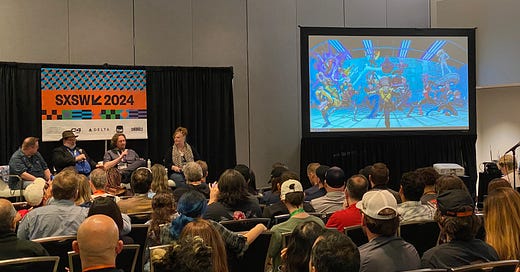



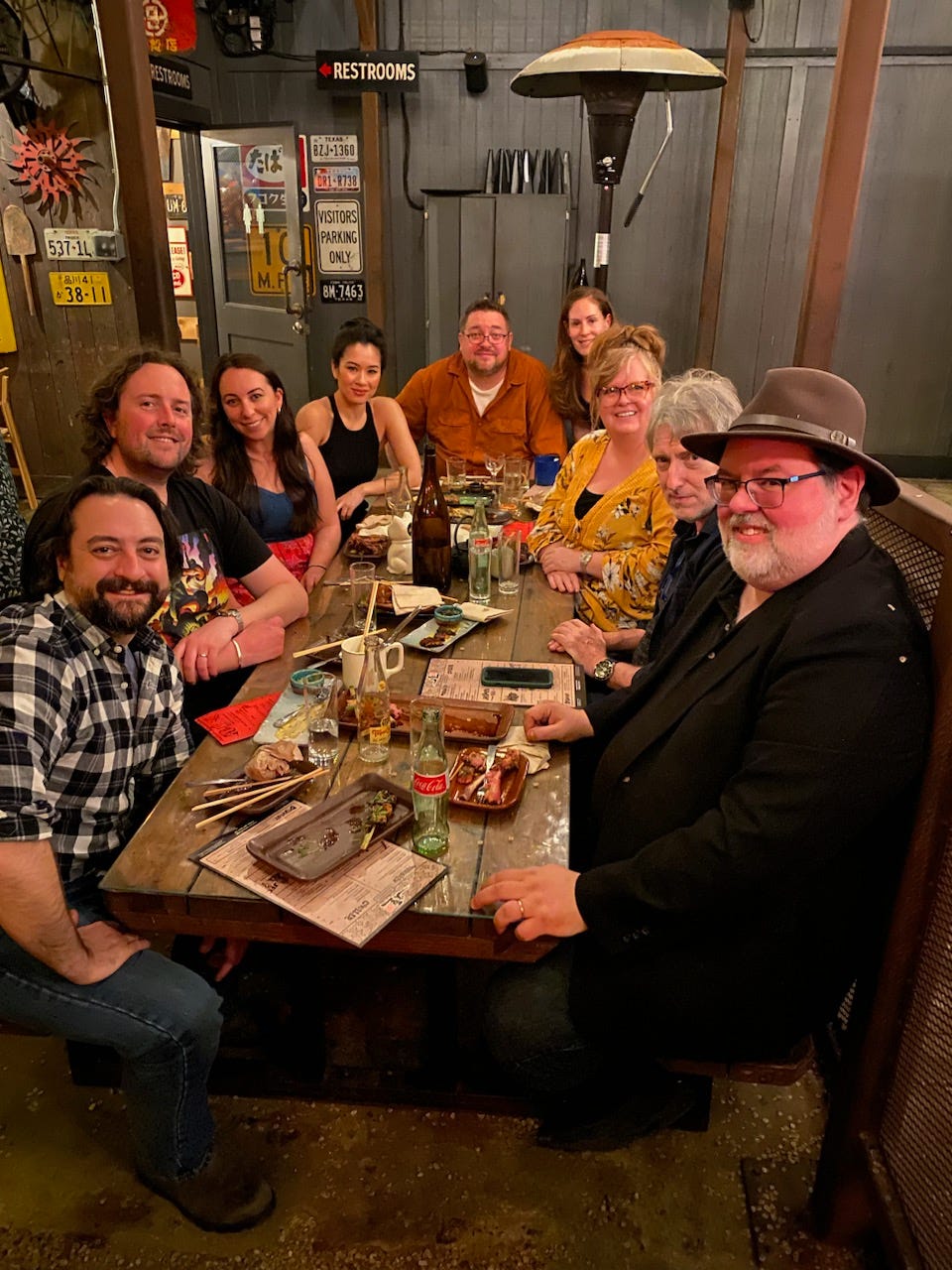
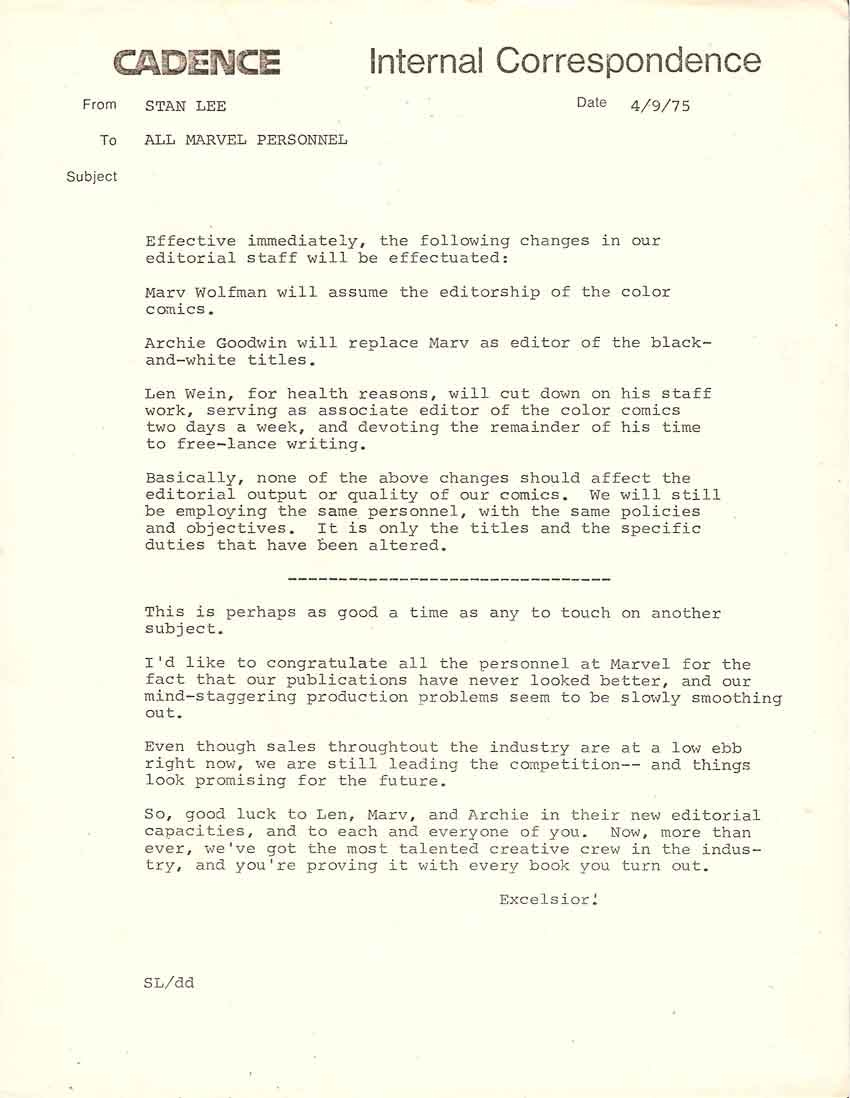
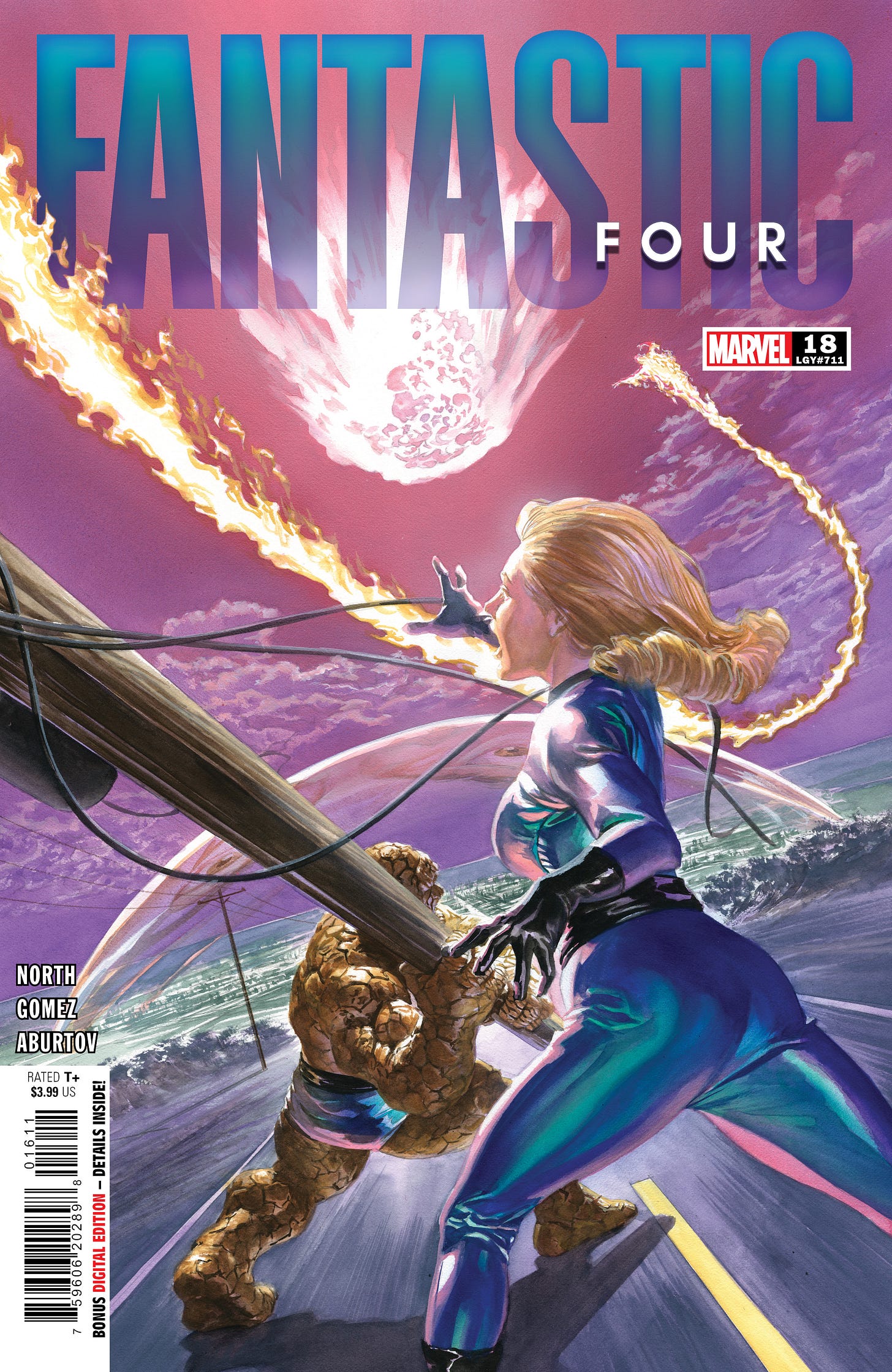
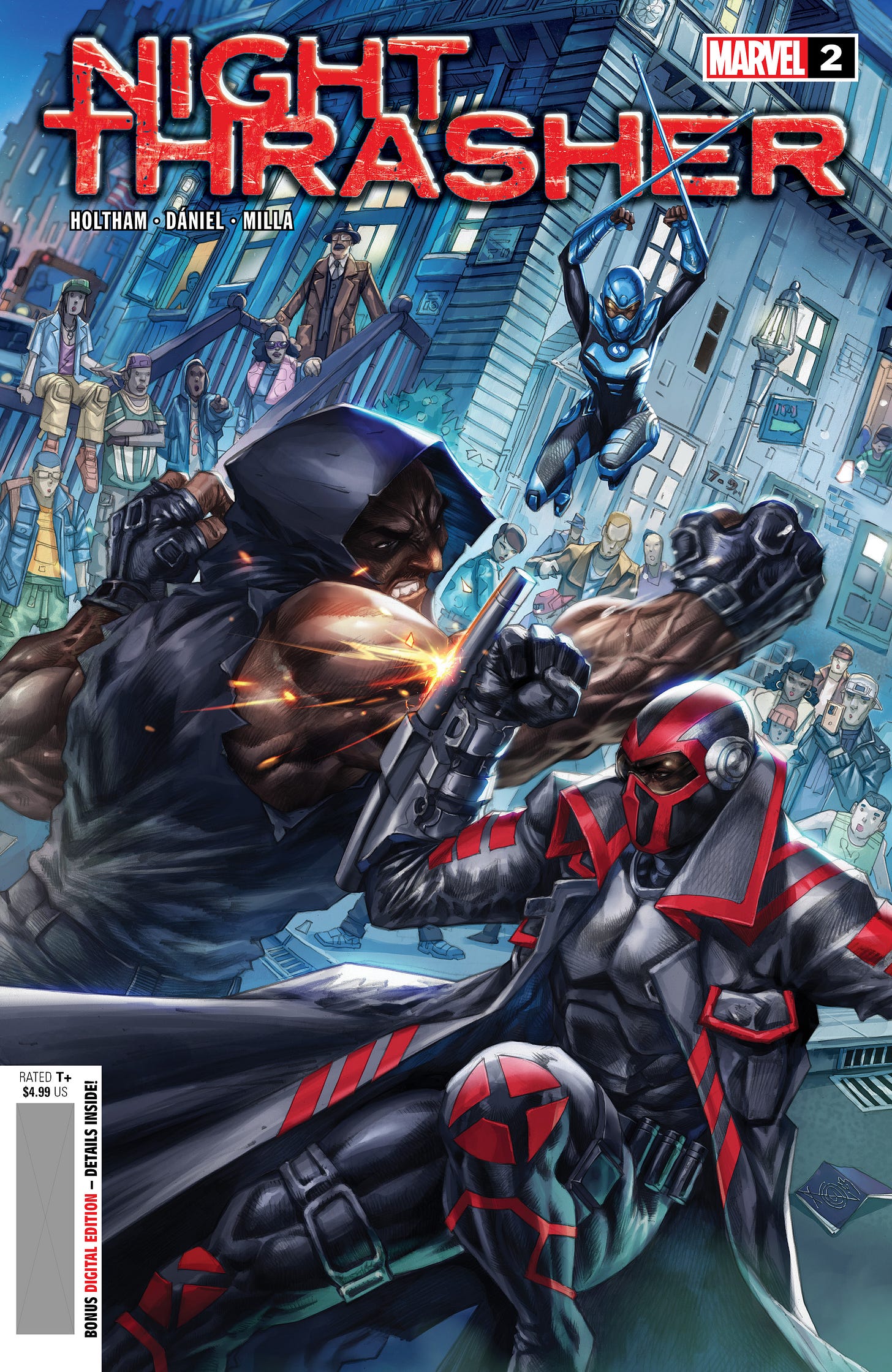

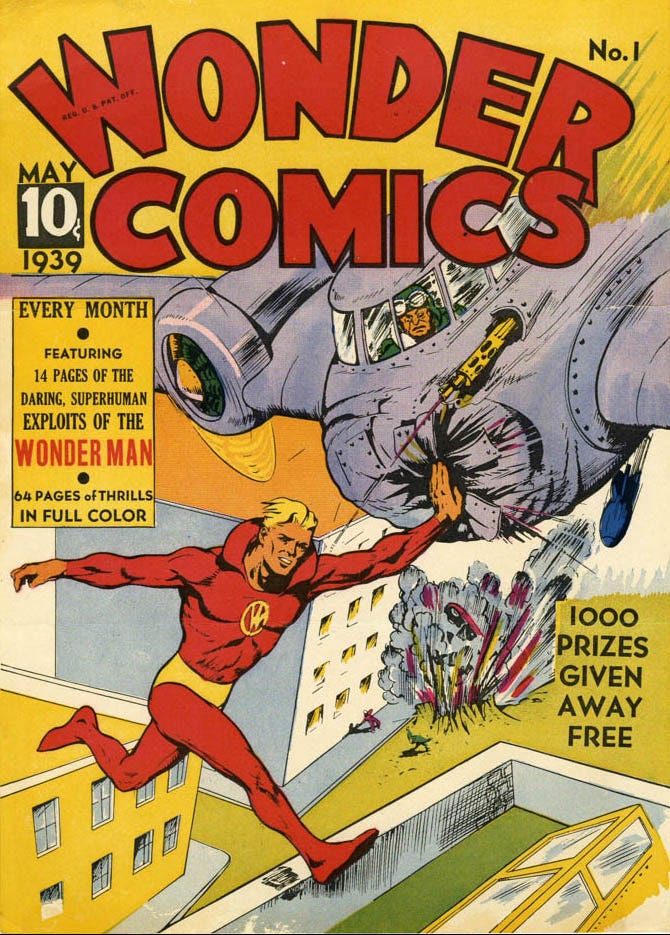

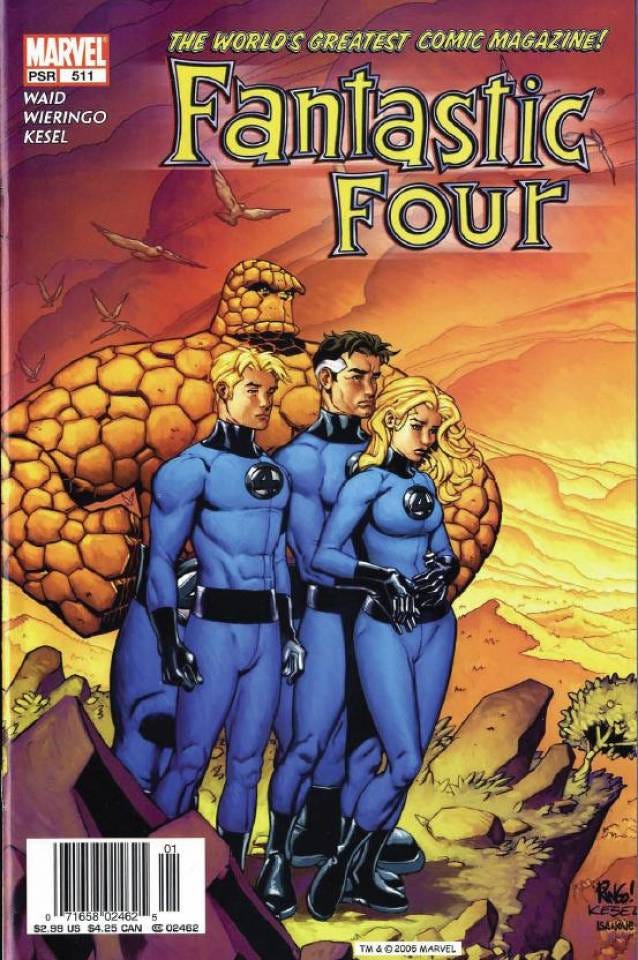
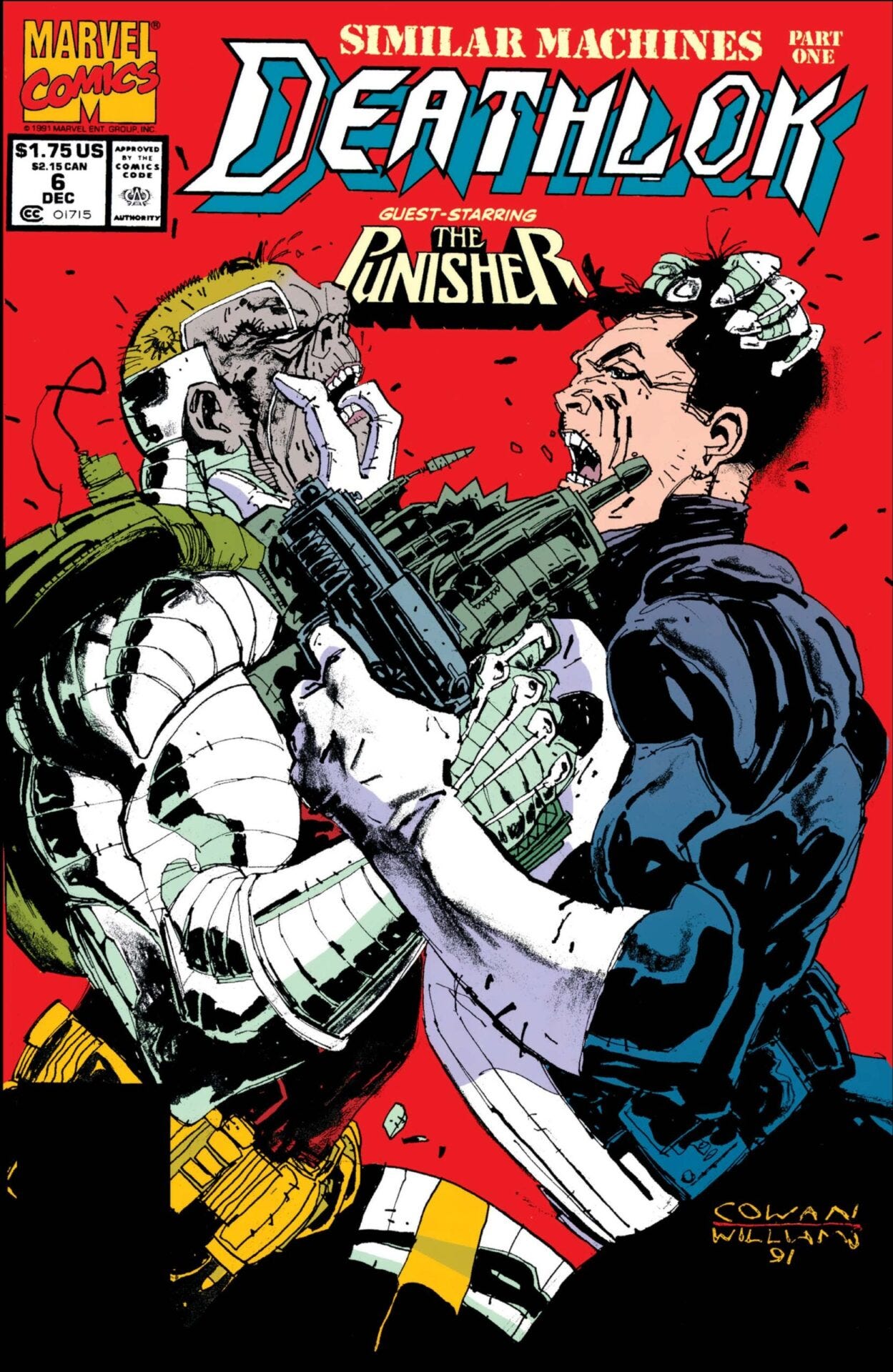
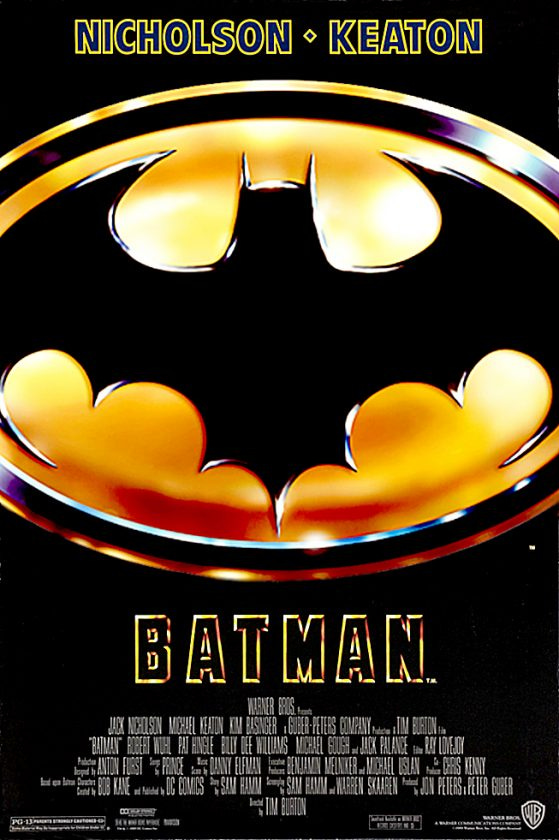

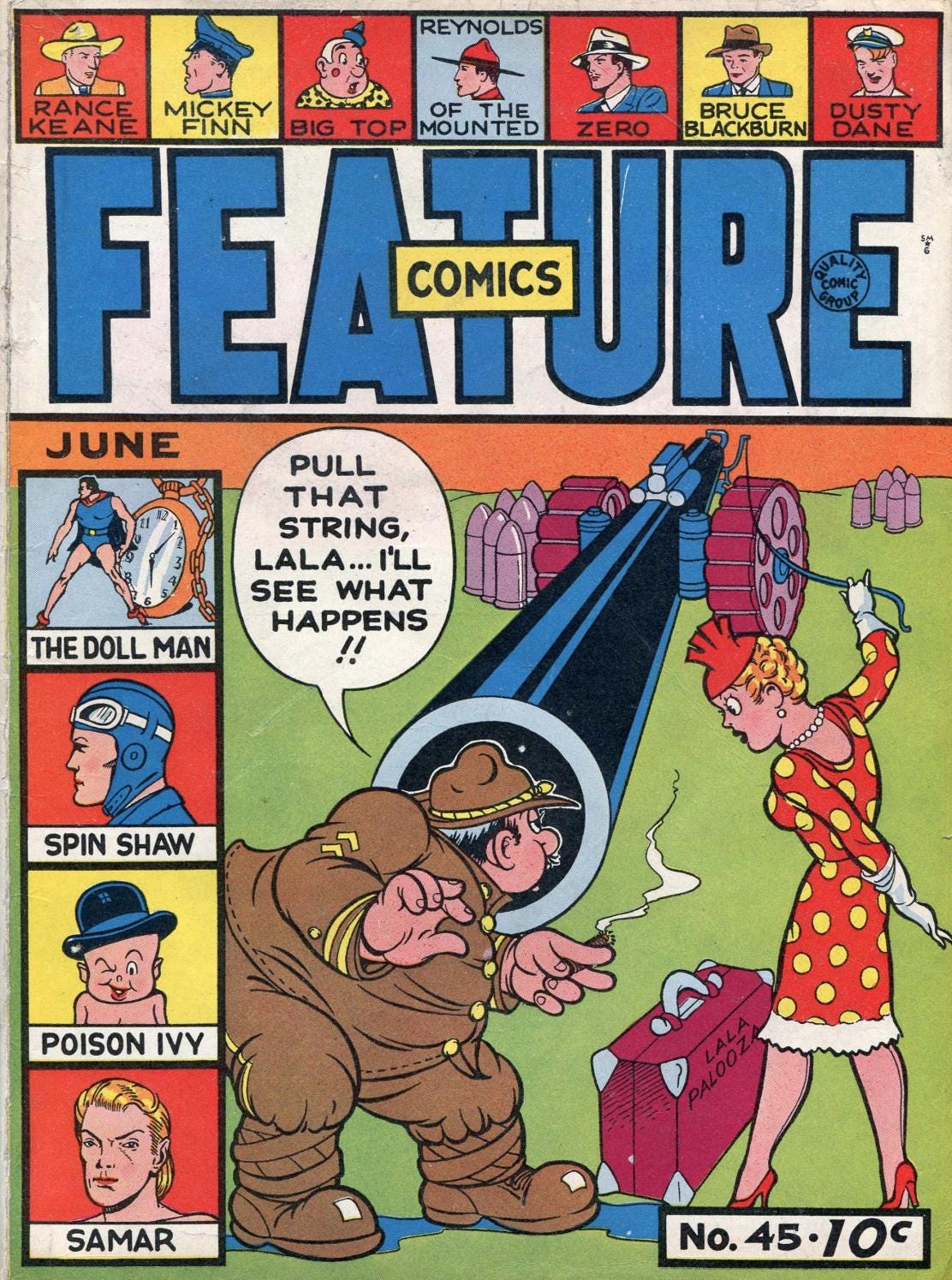
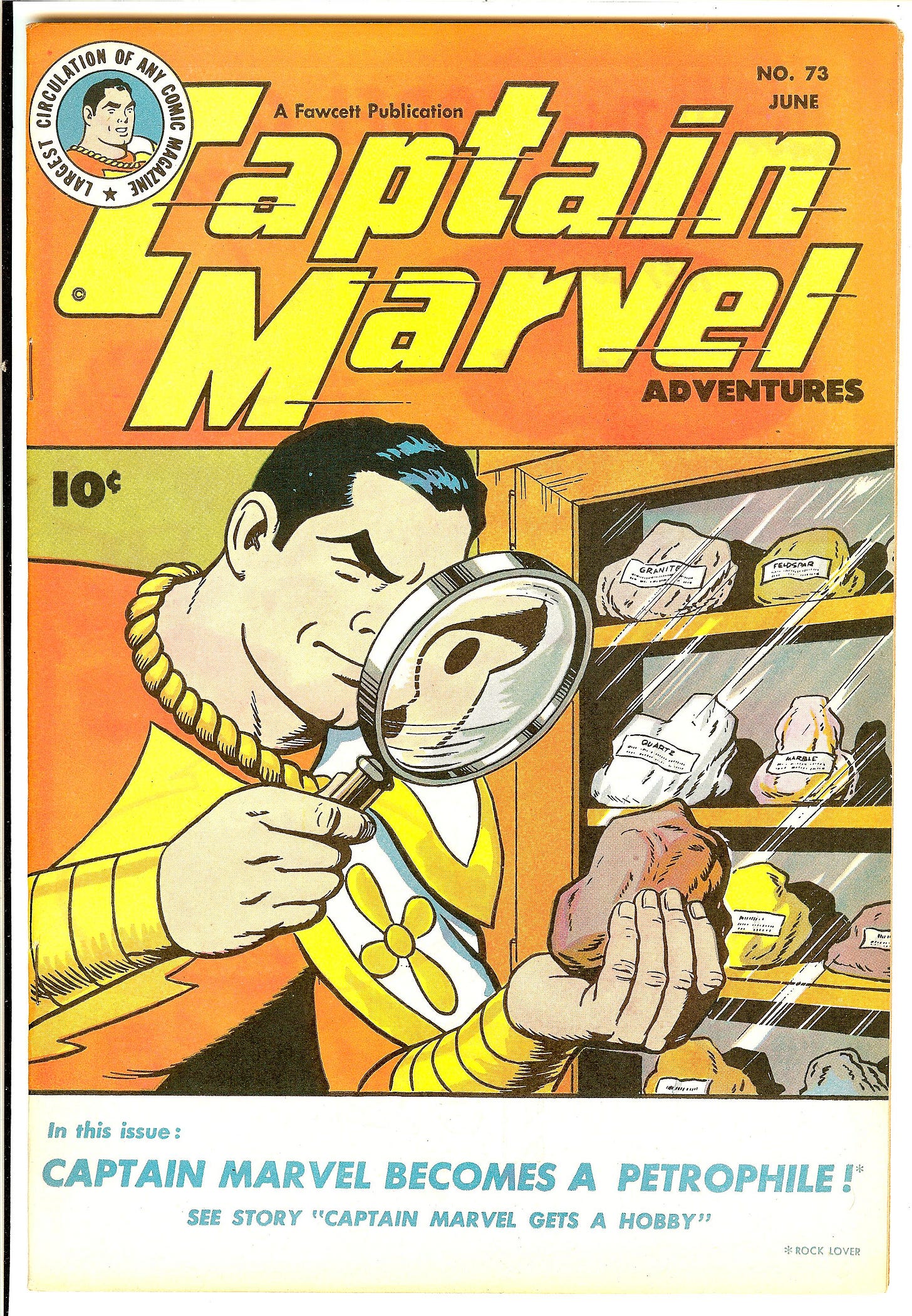
Hi Tom!
Congratulations on your new editorial position. About the Legacy numbering, the kind of question that perhaps only a few of us are interested in.
X-Men will have the Uncanny X-Men Legacy numbering with its #700, the last of the Krakoa Age issue. But this is the X-Men without adjectives.
That's why I wonder what Legacy numbering the X-Men by Jed MacKay and Ryan Stegman will have and what Legacy numbering the Uncanny X-Men by Gail Simone and David Marquez will have. I also assume that there will be no Legacy numbering for Exceptional, but there will be for other series with previous incarnations, such as X-Force or X-Factor.
Because this is driving me crazy! ;-)
Just so the history books get it right: when Mark first told me about the FF going to heaven— which I found shocking (in a very good way; the FF should always go to new and unknown places) and audacious and thrilling— and then meeting their "God" who would look just like Kirby, alarm bells instantly went off in my head. I said "but… what about Stan?" We can argue forever about who did what and who deserves credit, but the fact is those first 100 FF issues would not be the comics they are without Stan. So leaving him out seemed… insensitive, at best. I believe it was Mark who instantly problem-solved it: "Well… what if he got a phone call from his collaborator?" Solved the problem, as far as I was concerned. And that's pretty much the extent of my shaping any of what Mark and Mike did on their excellent run. It was an honor to be along for the ride, believe me.